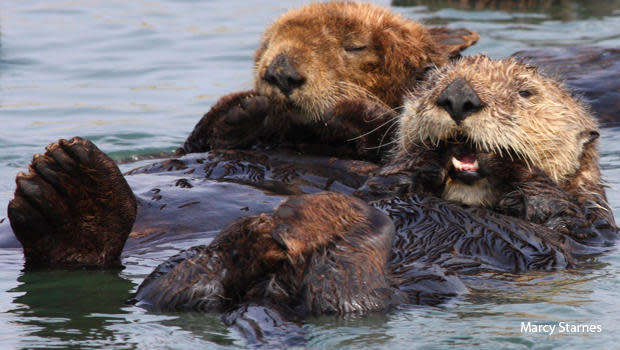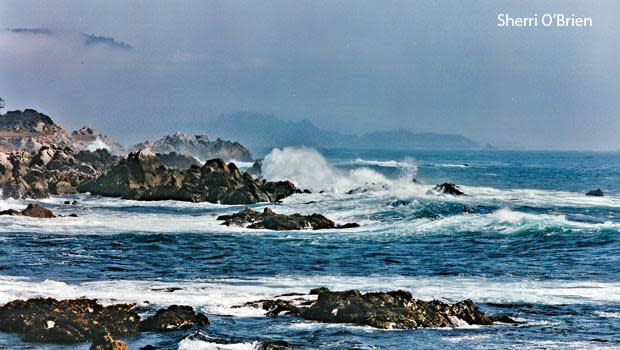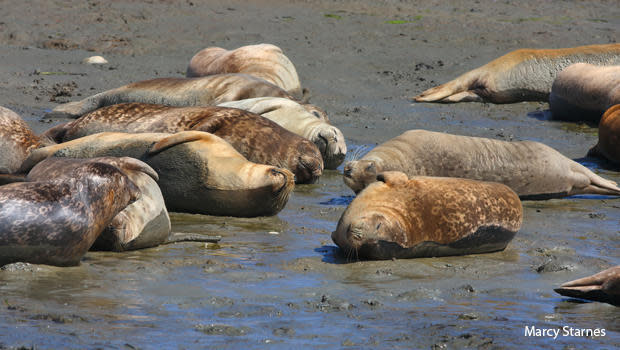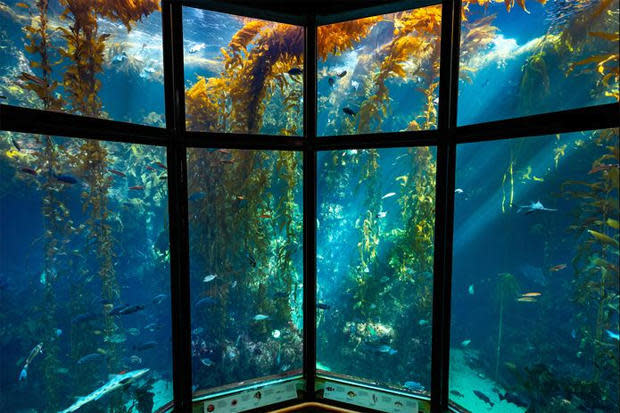Nature up close: Marine biology at Monterey Bay
By "Sunday Morning" contributing videographer Judy Lehmberg.
My first college teaching job required I get an additional 18 graduate hours beyond the master's degree I already had. Thankfully I had the sense to take a couple of plant classes because, oh my gosh, I had to teach botany the following semester! At the time I thought the only thing a plant was good for was for an animal to eat it, and I couldn't have cared less what its name was. (I later learned I was absolutely wrong; not only do I now love plants, I know many of them by name. You plant lovers can calm down – I'm one of you now.)
After I got up to speed on plants, I serendipitously found a marine biology course being taught by a college in Colorado. I wasn't sure studying marine biology in Colorado was such a great idea, but I called the number on the course notice. It was indeed a marine biology class and it would be taught during a summer field trip to Southern California and Baja California. Perfect!

Sea otters resting in Monterey Bay.
After the school year was over, I flew to Denver, where several other students in the class lived and were kind enough to pick me up. We rendezvoused with the rest of the class, including the two professors, and were off to California.
It was my first trip to the west coast. The rocky coastline and the ocean were gorgeous, much like Davenport Beach (the focus of last week's Moment of Nature video), just north of Monterey Bay – a sublime combination of crashing waves, rocky shores and stunning sunsets.

The California coast near Davenport Beach, just north of Monterey.
During our visit to Monterey, the professors chartered a boat which pulled nets through the bay, which is part of the largest marine sanctuary in the continental U.S. We caught, studied and released many species of fish, including one that bioluminesced. It is one of the most productive and diverse marine ecosystems in the world in part because of the almost two-mile-deep canyon running through it perpendicular to the coastline.
The upwelling from the canyon, along with the mixing of cold ocean currents from the north and warmer currents from the south, provides nutrients for a vast variety of more than 525 fish species, 36 species of marine mammals (such as whales, dolphins, seals and sea otters), kelp and another 450+ species of algae, and thousands of invertebrates varieties.

Harbor seals on the beach in Monterey Bay.
Our marine biology class continued into Baja California, but the stories from there will have to wait for another day. (You'll like the bioluminescent organisms in the toilet story.)
At the time we visited, Monterey still felt like a small town. It had a number of sardine canneries, but they had mostly shut down due to over-fishing. One of those canneries, Hovden Cannery, was being turned into the Monterey Bay Aquarium. Several marine biologists, including a daughter of David Packard (co-founder of Hewlett-Packard), had imagined the project, and with the financial backing of the David and Lucile Packard Foundation, they succeeded, with David Packard personally designing and building a surge machine to mimic the Pacific Ocean's movements that bathes its one-of-a-kind kelp forest exhibit in a continuous supply of nutrients, allowing kelp to grow up to five inches each day.

The Kelp Forest exhibit at Monterey Bay Aquarium. © Monterey Bay Aquarium
The aquarium has been such a resounding success that the rest of what was John Steinbeck's Cannery Row has almost entirely disappeared and been replaced with hotels, restaurants and parking lots. But there is one building that remains from Steinbeck's time and, I believe he would be pleased to know it is the site of Pacific Biological Laboratories, the laboratory of Ed Ricketts ("Doc," of the novel's "Western Biological"), which is now on the National Register of Historic Places.
"You can order anything living from Western Biological, and sooner or later you will get it." – "Cannery Row" (1945), by John Steinbeck
Ricketts was what both Steinbeck and I aspired to be: a marine biologist. He collected specimens from the area's tide pools and sold them to schools throughout the United States. Steinbeck, who studied marine biology in college, collaborated with him on "Sea of Cortez: A Leisurely Journal of Travel and Research," which he later revised as "The Log from the Sea of Cortez." Steinbeck accompanied Ricketts on many of his collecting trips, including a six-week trip to the Sea of Cortez (a.k.a. the Gulf of California).
Ed Ricketts was hit and killed by the Del Monte Express train on May 8, 1948 when his car stalled on the train tracks. He was 49 years old. If his friends hadn't bought his lab after his death (where they continued to meet every Wednesday) and then later sold it to the town of Monterey, there would be nothing left but memories of Cannery Row. The sardines were all fished out, the buildings Steinbeck immortalized almost all gone, and his characters only memories – memories that will continue to live on in me and countless others.
Judy Lehmberg is a former college biology teacher who now shoots nature videos.
See also:
Monterey Bay Aquarium, Monterey, Calif.Monterey Bay National Marine Sanctuary (NOAA)"Cannery Row" by John Steinbeck (Penguin Classics), in Hardcover, Trade Paperback, Mass Market Paperback, eBook and Audio formats, available via Amazon Judy Lehmberg (Official site)Judy Lehmberg's YouTube ChannelTo watch extended "Sunday Morning" Nature videos click here!
Social media’s role in spreading coronavirus misinformation
Ohioans share their thoughts on the state's battleground presidential primary
